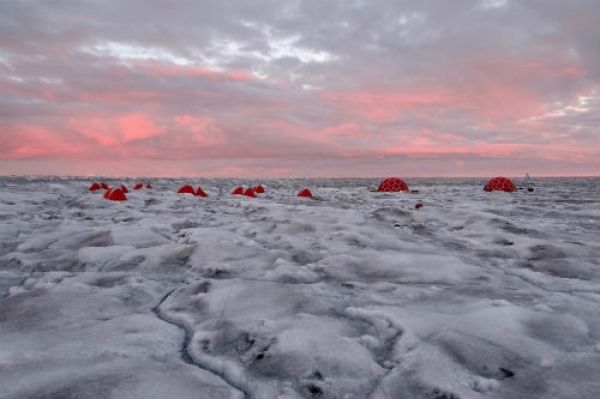New research led by scientists from the University of Bristol has revealed new insights into how the microscopic algae that thrives along the edge of the Greenland Ice Sheet causes widespread darkening.
This darkening is critically important as darker ice absorbs more sunlight energy and melts faster, accelerating the overall melting of the ice, which is the single largest contributor to global sea level rises.
Extremophile microscopic algae, or so-called ‘glacier algae’, are able to live in the upper few centimetres of ice on the surfaces of glaciers and ice sheets and can form widespread blooms during the summer melt season.
Glacier algal blooms on the Greenland Ice Sheet are so extensive that their presence in the surface ice is thought responsible for widespread darkening along the western margin of the ice sheet known as the ‘dark zone’ that has appeared in satellite observations over the last two decades.
Read more at University of Bristol
Image: Black and Bloom field camp established on the surface of the Greenland Ice Sheet approximately 35km inland from the southwestern ice sheet margin. Note the discoloured (dark) ice in the image driven by biological communities. Large dome tents are the science and mess tent, with smaller tents the personal tents for team members who spent around four weeks camping on the ice in 2016 and 2017. (Credit: Dr Jenine McCutcheon)


